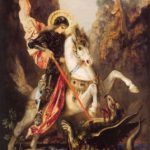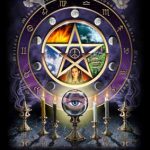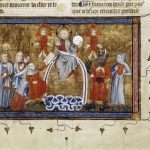It is usually said that there was no organization of witches until the thirteenth century. Nevertheless, numerous documents have been written about an organized anti-Christian religion supported by consistent testimonies made by the witches as to the main features of the cult.
Local variations are given, but there is agreement on broad lines, that gives us a fair knowledge of the secret religion. Imaginary or not, let’s go further into details and follow the descriptions of writers of their time.
In substance this cult is monotheistic and has nothing to do with ancient paganism. Lucifer, the brilliant archangel of the Old Testament God was the object of the cult. The writers, Christian clerks or judges, invariably state, that the witches insist that this being is “the true god.” He is their lord, master and prince.
At all events, the witches everywhere and unanimously speak of some living person who is to them “the devil”, their master or his representative in the flesh. To most of them the chief seems a semi-supernatural person, though in some cases they frankly speak of him as a quite well known man of their own district, the secret organizer of the sect.
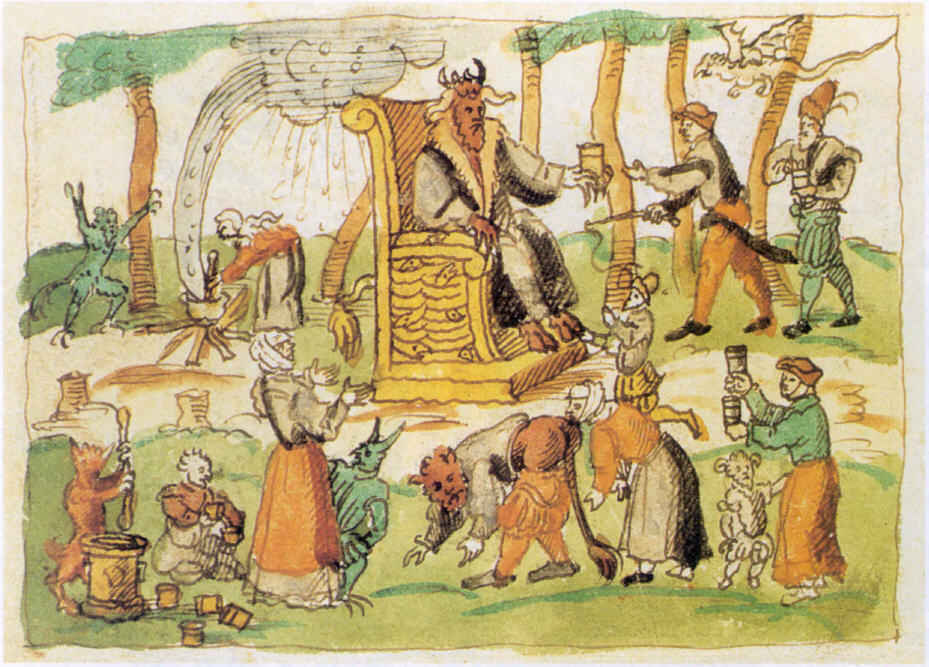
The chief had an assistant who helped to give notice of meetings. This man seems to have succeeded to the mastership when the chief died. There were no elections, so that the succession must have been by nomination. Heads of the local groups or “covens” were appointed. The local unit of the cult was a group of thirteen men and women (or twelve and a leader) called a “coven,” which seems to be a corruption of “convene.” Possibly the idea was founded on the story of Christ and his twelve disciples.
The great assemblies or Sabbaths were, naturally, at the primitive festival times of the race, spring and autumn. The first, the Walpurgis Night of the German witches, was held on the eve of May 1st, and the second on the eve of November 1st. Later a midsummer Sabbath and one at Christmas were added, and in places there were other festivals on the Christian feast-days.
There were lesser meetings, called Esbats, for business purposes and to report and deliberate on their magical practices, and in the end these seem generally to have been held on Fridays, possibly in derision of the Christian veneration of Friday, the supposed day of Christ’s death.
The ritual of the Sabbath is so consistently given by the witches everywhere that we can confidently describe it. A few women under torture might “confess” that they had ridden on broomsticks and made ointment of babies’ fat, but the reliable witnesses tell a quite plausible story.
Some quiet spot in the neighborhood, a hill, a wood, or an ancient stone monument, was appointed for the meeting, and in the dead of night the witches found their way to it; generally on foot, as it was not usually far away, but often on horse or ass. The hour of assembly was midnight, and the festival usually lasted until near dawn.
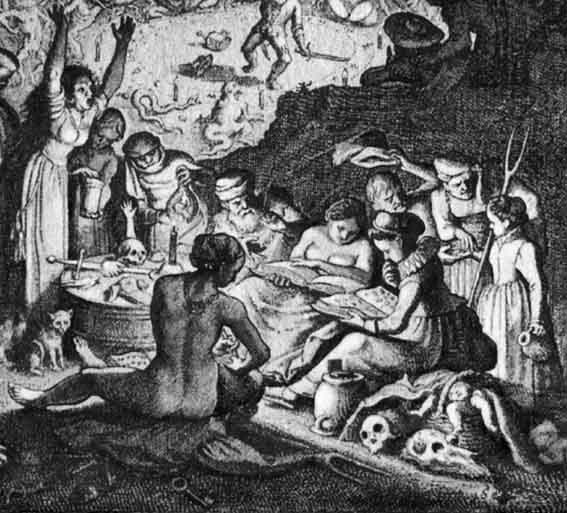
Paying homage to the chief was the first item. The living representative of Lucifer was on these occasions always disguised, and the women vaguely imagined that they were in the presence of their “god.” They speak of him as having the form of a bull, a goat, an ape, a cat, a dog, or some other animal, and it seems clear that at least the lower part of his body was clad in the skin of a sheep or goat, the tail hanging behind. In some cases he seems to have worn a mask at the back of his head or above his tail.
Homage meant kissing some part of his anatomy, and there cannot be the slightest doubt, so numerous and consistent are the testimonies of the reliable witnesses, that kissing his buttocks was practically a universal custom. Old members might kiss his face, and even neophytes might be directed to kiss his cheek, arm, or thigh.
And an important part of this ceremony was that mothers presented their children, particularly baby girls, to the “devil.” The formula given by several witnesses is: “Great Lord, whom I worship, I bring you this new servant who desires to be your slave forever.”
The girls, it seems, returned at about the age of nine and repeated the homage in their own names, and the “grand mistress or “queen of the Sabbath”, some lady who was closely allied with the chief, then directed them to renounce the Christian God, Jesus, the Church, the sacraments, the clergy and monks, and everything connected with the prevailing religion.
In places, at least, they had to trample or spit on a cross-marked in the ground. They then kissed the usual sacred part and received what was known throughout the Middle Ages as “the witch’s mark.” In England, especially, much stress was laid on this mark.
A weird chapter could be written on the marks that were reported in court. In point of fact, there seems to have been a general practice of marking those who were initiated to witchcraft at the Sabbaths. The mark was, however, a simple puncture made with an awl or sharpened bone. Whether anything was smeared on the instrument we cannot say, but the “insensible area” for which the witch-finders looked is simply a figment.
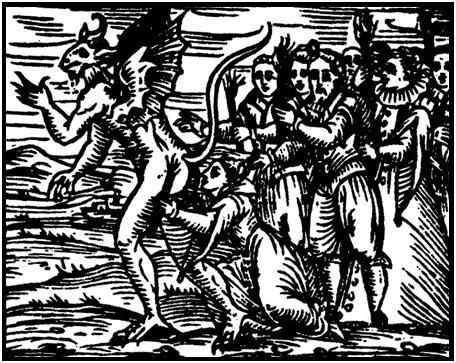
After the entire assembly had paid homage the chief received reports from local officers, and the dance, which seems to have been the most important part of the solemnity, took place. Dancing and feasting, in fact, occupied the remaining hours of the night. The witches brought food with them, and we may confidently suppose that the dance and the feast alternated.
The women often visibly light up with joy as they describe to the judge the wild dance across the country, the “devil” often playing pipes, leading the way, his tail wagging before the crowd, and the long stream of witches, at the highest pitch of excitement, following in a line. The flute, drum, and other instruments also were used.
As far as the sexual practices are concerned, we have here a somewhat confused experience. Quite commonly the witches, the untortured English witches as well as the continental, confess that they copulated with the devil, at any period after the age of twelve. Miss Murray calls this part of the solemnity “the fertility rites,” and no doubt it was in a sense a continuation of the genuine fertility rites of the old religions.
In some places, either at the Sabbath or elsewhere, the “devil” celebrated a black mass. Animals were commonly sacrificed, and there is only too good ground to believe that children were occasionally sacrificed, especially to provide the blood at the black mass. The wafer was generally stolen from the Church, the man or woman going to communion and keeping the wafer dry in his mouth until he was out of sight.
The secret dark cult was clearly a reaction about the official Church and it has tried to mimic the various aspects of its ceremonies. The mass started from the end, the priest wears a black robe, the body of a nude woman replaces the altar, ….
It is in the late XVIIth, XVIIIth and early XIXth centuries that the black mass became popular and better known to the general public. Jean Bodin claimed that he attended the first Black Mass organized by the witchy Catherine de Medicis for the dying Charles IX. The devil was supposed to speak through the mouth of a child decapited previously.
There are two reasons to explain this black surge, first it was less risky to adore Satan and recognize it as persecution have stopped at this time; second it was “fashionable» and “original” to indulge in something different than the Christian religion; third, Lucifer began to be recognized as a positive symbol of revolt and modernism.




